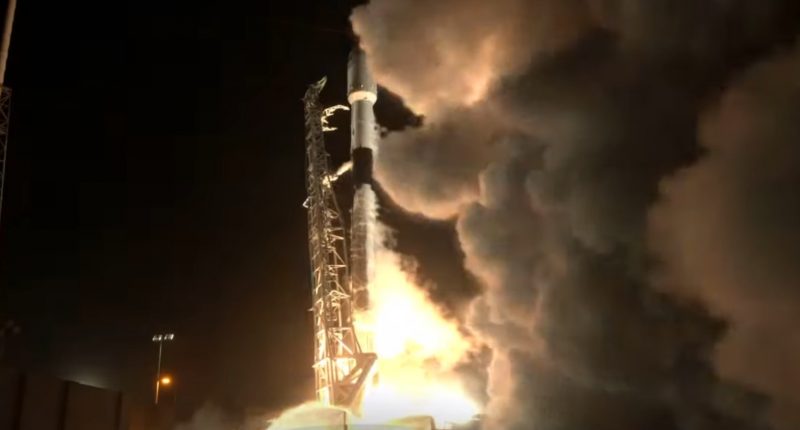Further adding in to the blockbuster year that SpaceX is having, the company today successfully launched yet another batch of 60 Starlink satellites. These 60 fresh satellites would add on to an already existing constellation of 420 Starlink satellites in low earth orbit. The idea is to deploy thousands of these –12,000 to be precise — to create a low-latency advanced internet system globally.
The rocket lifted off at 9:25 p.m. EDT (0125 GMT on June 4) from Space Launch Complex 40 at Cape Canaveral Air Force Station in Florida. Today’s flight is the eighth 60-satellite mission for SpaceX’s Starlink project, bringing the total number of satellites launched for the nascent broadband network up to 482, including two prototypes launched back in Feb 2018.
Apart from the successful launch, SpaceX once again successfully recovered the first stage of Falcon 9 rocket that flew for this mission. In what was once considered unachievable (and still is for many), has now become a habit for SpaceX, for all of its launch. While the historic manned space mission Demo 2 used a new booster, this Starlink one has already flown four times previously.
The Falcon 9 rocket that flew today’s Starlink batch, is the second Falcon 9 first stage to fly five times. The booster previously launched two other Starlink missions as well as a batch of Iridium NEXT satellites and a Canadian communications satellite.
Another little feat that the Elon Musk-led space company achieved, is operating two drone ships simultaneously. This time, the Falcon 9 booster landed on the “Just Read the Instructions” drone ship in the east coast. This SpaceX droneship has been under refurbishment for some time, and was moved from the west coast to east. The ship was used, since the usual “Of course I still love you” droneship is busy bringing back the Demo 2 first stage back to port.
Musk had said that SpaceX would need at least 400 operational Starlink satellites to provide low coverage and at least 800 to start providing moderate coverage. The service is scheduled to go live later this year.
The Tech Portal is published by Blue Box Media Private Limited. Our investors have no influence over our reporting. Read our full Ownership and Funding Disclosure →





